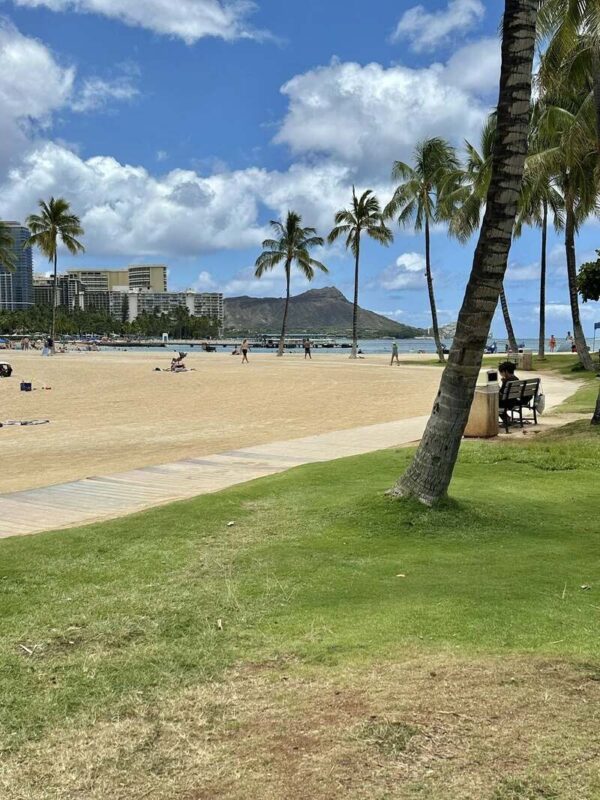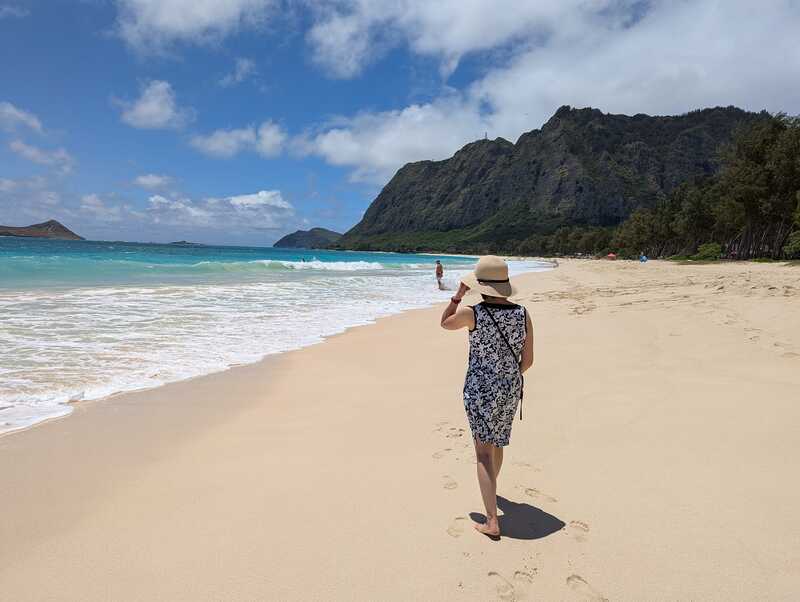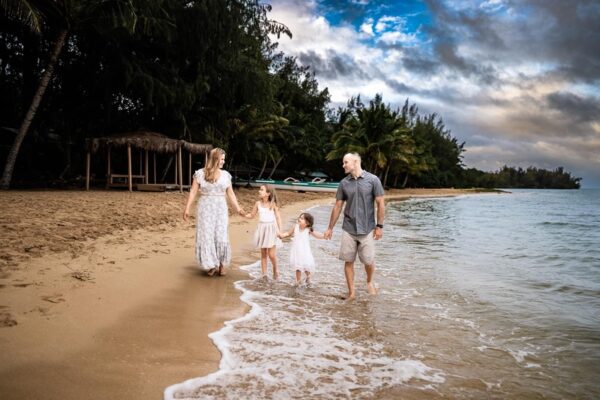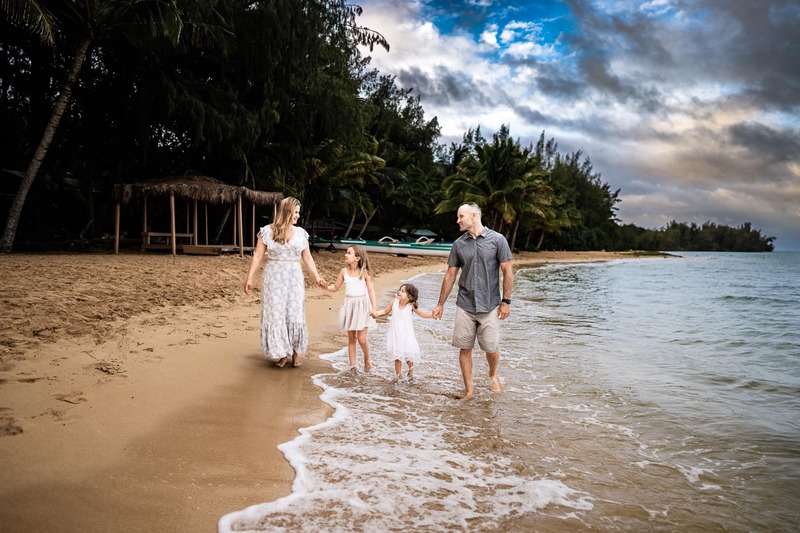Blog
What to Wear in Oahu? Complete guide for you
Picture yourself stepping off the plane in Honolulu, warm tropical air embracing you as palm trees sway in the gentle trade winds. The vibrant colors of plumeria flowers catch your eye, and you can already hear the distant sound of waves crashing against famous beaches like Waikiki. But as you reach for your luggage, a crucial question crosses your mind: “What should I actually wear during my time in Oahu?”
Choosing the right clothing for Oahu isn’t just about looking good in your vacation photos – it’s about staying comfortable, respecting local culture, and being prepared for everything from snorkeling adventures to sunset dinners. This article will walk you through everything you need to know about dressing appropriately for Hawaii’s most visited island, covering climate considerations, essential clothing items, activity-specific outfits in Oahu.
Understanding Oahu’s Weather and Choosing the Right Outfit
Oahu’s tropical climate creates a year-round summer paradise, but understanding its nuances is essential for making smart clothing decisions. The island maintains consistent temperatures throughout the year, with average highs ranging from 78°F to 85°F and lows rarely dropping below 65°F. However, it’s not just the temperature that matters – it’s the combination of heat, humidity, and intense UV radiation that will influence what you should pack.

The humidity levels in Oahu typically hover between 60-70%, which means your body’s natural cooling system works overtime. This constant moisture in the air makes synthetic fabrics feel sticky and uncomfortable, while natural, breathable materials become your best friends. The trade winds provide natural air conditioning, but they can be unpredictable, making it important to choose clothing that works in both breezy and still conditions.
Sun intensity in Oahu is significantly stronger than what most mainland visitors experience. The UV index regularly reaches extreme levels, especially between 10 AM and 4 PM. This means sun protection isn’t just recommended – it’s absolutely essential for preventing painful sunburns and long-term skin damage.
When selecting clothing for Oahu, prioritize these fabric types:
- Cotton: Natural, breathable, and comfortable against the skin
- Linen: Excellent air circulation and quick-drying properties
- Rayon: Lightweight and flows well in tropical breezes
- Bamboo: Naturally antimicrobial and moisture-wicking
- Merino wool: Surprisingly cool and odor-resistant for active wear
These fabrics allow air to circulate around your body and wick moisture away from your skin, helping you stay cool and comfortable throughout the day. Avoid heavy synthetic materials like polyester or nylon for everyday wear, as they trap heat and moisture.
Essential Clothing Items for Your Oahu Wardrobe
Casual Daywear for Exploring and Sightseeing
Your daily uniform in Oahu should prioritize comfort and sun protection while maintaining a relaxed, vacation-appropriate style:
Shorts: Choose lightweight cotton or linen shorts that hit at or just above the knee. Board shorts work well for men and can double as swimwear.
Tank tops and T-shirts: Breathable cotton or bamboo fabrics work best. Consider long-sleeved options for extra sun protection.
Sundresses: Flowy, knee-length dresses in natural fabrics are perfect for sightseeing and dining.
Aloha shirts: These iconic Hawaiian shirts are not just tourist attire – they’re a legitimate part of local fashion culture.
For air-conditioned spaces like shopping centers, museums, or restaurants, pack a lightweight cardigan or thin long-sleeved shirt. The temperature difference between outdoor heat and indoor air conditioning can be significant.
Beachwear Must-Haves
Swimsuits: Pack at least two so you always have a dry option. Quick-dry materials are essential.
Rash guards: These provide excellent sun protection for water activities and are especially important for snorkeling or surfing.
Cover-ups: Lightweight sarongs, kaftans, or beach dresses for transitioning from beach to lunch.
Board shorts: Versatile for both swimming and casual wear.
Don’t forget that many of Oahu’s beaches have coral reefs, so protecting these delicate ecosystems while protecting your skin is crucial.

Footwear for Every Occasion
Flip-flops or sandals: Essential for beach days and casual outings. Choose pairs with good arch support for extended walking.
Water shoes: Necessary for rocky beaches, snorkeling, or hiking near waterfalls.
Hiking shoes: Sturdy, closed-toe shoes with good traction for trails like Diamond Head or Manoa Falls.
Casual sneakers: Clean, comfortable shoes for dining out or shopping.
Avoid bringing expensive shoes, as sand, salt water, and humidity can damage leather and delicate materials.
Clothing for outdoor adventures in Oahu
Beach and Water Activities: Comfort and Sun Protection
For beach and water activities, sun protection should be your top priority:
- UV-protective swimwear: Look for clothing with UPF (Ultraviolet Protection Factor) ratings of 30 or higher.
- Wide-brimmed hats: Essential for protecting your face, neck, and ears from intense UV rays.
- Reef-safe sunscreen: Hawaii has banned sunscreens containing oxybenzone and octinoxate to protect coral reefs.
- Sunglasses: Polarized lenses reduce glare from water and sand.
Remember that the sun’s rays are strongest between 10 AM and 4 PM, so plan your most exposed activities during early morning or late afternoon hours.
Hiking and Outdoor Adventures: Practical and Protective Clothing
Oahu’s hiking trails range from easy walks to challenging climbs, requiring appropriate gear:
- Moisture-wicking shirts: Long-sleeved options provide sun and insect protection.
- Hiking pants or shorts: Choose materials that dry quickly and won’t restrict movement.
- Closed-toe hiking shoes: Essential for trails with loose rocks or roots.
- Hat with chin strap: Prevents loss during windy conditions.
- Lightweight backpack: For carrying water, snacks, and extra layers.
Many trails can be muddy, especially after rain, so choose clothing and footwear that you don’t mind getting dirty.
Casual Sightseeing and Shopping Outfits
For exploring Oahu’s cultural sites, shopping districts, and urban areas:
- Comfortable walking shoes: You’ll be doing lots of walking on various surfaces.
- Lightweight pants or longer shorts: Appropriate for visiting temples or cultural sites.
- Breathable shirts: Choose styles that look neat but keep you cool.
- Small crossbody bag: Keeps your hands free and belongings secure.
Many indoor attractions are air-conditioned, so having a light layer available is helpful.
Evening Wear and Dining Out: Resort Casual and Luaus
Evening activities in Oahu typically call for “resort casual” attire:
- Khakis or dress shorts: Clean, pressed, and paired with a collared shirt.
- Sundresses: Flowy, knee-length options in tropical prints or solid colors.
- Aloha shirts: Perfectly appropriate for most restaurants and luaus.
- Closed-toe shoes: Nicer sandals or casual dress shoes for upscale dining.
For traditional luaus, embrace Hawaiian style with aloha shirts, muumuus, or tropical prints while remaining respectful of cultural significance.
Accessories and Sun Protection Essentials
The right accessories can make or break your Oahu experience. Sun protection isn’t optional in Hawaii – it’s a daily necessity that affects your comfort, health, and enjoyment of activities.
Hats, Sunglasses, and UV-Protective Clothing
Wide-brimmed hats: Choose styles that provide 360-degree coverage and have chin straps for windy conditions.
Polarized sunglasses: Reduce glare from water and sand while providing 100% UV protection.
UV-protective clothing: Look for garments with UPF ratings, especially for water activities.
Lightweight long-sleeved shirts: Provide coverage without overheating.
Reef-Safe Sunscreen
Hawaii has taken a strong stance on protecting its coral reefs by banning sunscreens containing oxybenzone and octinoxate. These chemicals contribute to coral bleaching and ecosystem damage. When shopping for sunscreen, look for mineral-based formulas containing zinc oxide or titanium dioxide. These are not only reef-safe but also provide excellent protection for your skin.
Apply sunscreen generously and reapply every two hours, especially after swimming or sweating. Remember that UV rays can penetrate clouds, so sunscreen is necessary even on overcast days.

Outfit ideas for trips of all lengths
3-Day Trip Essentials:
- 2-3 pairs of shorts
- 3-4 lightweight shirts
- 1 sundress or aloha shirt
- 2 swimsuits
- 1 cover-up
- Flip-flops and one pair of closed-toe shoes
- Hat, sunglasses, and reef-safe sunscreen
7-Day Trip Additions:
- 1-2 additional shorts and shirts
- Hiking shoes and moisture-wicking activewear
- Light cardigan or jacket
- Nicer outfit for dining out
- Extra swimwear and beach accessories
14-Day Trip Considerations:
- Plan to do laundry mid-trip rather than packing two weeks’ worth of clothing
- Add one dressier outfit for special occasions
- Include variety in colors and styles
- Consider packing detergent for washing swimwear
Choosing what to wear in Oahu is about more than just staying cool – it’s about respecting the culture, protecting yourself from the elements, and fully embracing the island experience. By focusing on breathable natural fabrics, appropriate sun protection, and versatile pieces that can transition from beach to dinner, you’ll be prepared for whatever adventures await.
Remember that the best outfit in Oahu is one that makes you feel confident, comfortable, and ready to explore. Whether you’re watching the sunrise from Diamond Head, snorkeling in Hanauma Bay, or enjoying a traditional luau, the right clothing choices will enhance your experience and help you create lasting memories in this tropical paradise.
Pack light, dress respectfully, and don’t forget to embrace the aloha spirit in everything you wear. Your Oahu adventure awaits, and now you’re perfectly dressed for whatever the island has in store.

